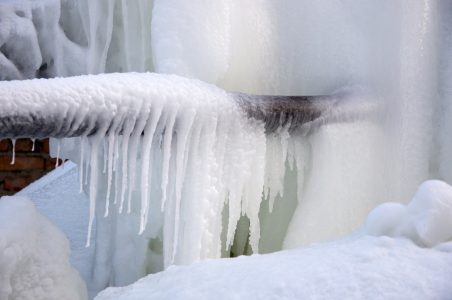Preventing Pipes from Freezing: Best Tips
Preventing Pipes from Freezing: Best Tips
Blog Article
Are you searching for advice involving How to prepare your home plumbing for winter weather?
.jpg)
Cold weather can ruin your plumbing, specifically by freezing pipes. Below's how to avoid it from taking place and what to do if it does.
Introduction
As temperature levels drop, the danger of frozen pipes rises, possibly bring about expensive fixings and water damage. Understanding exactly how to avoid icy pipelines is critical for homeowners in cold climates.
Prevention Tips
Insulating susceptible pipes
Wrap pipelines in insulation sleeves or use warm tape to safeguard them from freezing temperatures. Focus on pipes in unheated or external locations of the home.
Home heating methods
Keep interior rooms adequately warmed, particularly locations with pipes. Open closet doors to enable cozy air to circulate around pipes under sinks.
Just how to identify frozen pipelines
Try to find reduced water flow from faucets, uncommon odors or sounds from pipes, and noticeable frost on exposed pipelines.
Long-Term Solutions
Structural changes
Consider rerouting pipelines away from exterior walls or unheated areas. Add additional insulation to attic rooms, basements, and crawl spaces.
Updating insulation
Purchase top quality insulation for pipelines, attic rooms, and wall surfaces. Proper insulation assists preserve regular temperature levels and lowers the threat of icy pipelines.
Securing Exterior Plumbing
Garden hoses and outdoor faucets
Separate and drain garden hose pipes before winter months. Set up frost-proof spigots or cover outside faucets with shielded caps.
Comprehending Icy Pipes
What causes pipelines to freeze?
Pipelines freeze when revealed to temperatures listed below 32 ° F (0 ° C) for extended periods. As water inside the pipelines ices up, it increases, taxing the pipe walls and possibly triggering them to rupture.
Threats and problems
Icy pipelines can bring about water system disturbances, residential property damages, and pricey repair services. Burst pipelines can flood homes and cause extensive structural damages.
Indications of Frozen Pipes
Determining frozen pipelines early can prevent them from rupturing.
What to Do If Your Pipelines Freeze
Immediate actions to take
If you presume icy pipes, maintain faucets open up to eliminate pressure as the ice thaws. Use a hairdryer or towels soaked in hot water to thaw pipelines gradually.
Final thought
Preventing icy pipelines needs positive measures and quick reactions. By comprehending the causes, signs, and safety nets, homeowners can protect their pipes during winter.
6 Proven Ways to Prevent Frozen Pipes and Protect Your Home
Disconnect and Drain Garden Hoses
Before winter arrives, start by disconnecting your garden hoses and draining any remaining water. Close the shut-off valves that supply outdoor hose bibs and leave the outdoor faucet open to allow any residual water to drain. For extra protection, consider using faucet covers throughout the colder months. It’s also important to drain water from any sprinkler supply lines following the manufacturer’s directions.
Insulate Exposed Pipes
Insulating your pipes is an effective way to prevent freezing. Pipe insulation is readily available at home improvement stores and is relatively inexpensive. Pay close attention to pipes in unheated areas such as the attic, basement, crawl spaces, or garage. Apply foam insulation generously to create a buffer against the cold. You can also wrap your pipes in heat tape or thermostat-controlled heat cables for added warmth.
Seal Air Leaks
Inspect your home for any cracks or openings that could let in cold air. Seal any holes around the piping in interior or exterior walls, as well as the sill plates where your home rests on its foundation. Additionally, make sure to keep your garage door closed unless you’re entering or exiting. Leaving it open creates a significant air leak that can lead to frozen pipes.
Allow Warm Air Circulation
During cold snaps, it’s essential to allow warm air to circulate evenly throughout your home. Leave interior doors ajar to promote better airflow. Open kitchen and bathroom cabinets to help distribute heat consistently around the rooms. If you have small children or pets, be sure to remove any household chemicals or potentially harmful cleaners from open cabinets for safety.
Let Faucets Drip
A small trickle of water can make a big difference in preventing ice formation inside your pipes. When temperatures drop significantly, start a drip of water from all faucets served by exposed pipes. This continuous flow helps prevent the water from freezing. Additionally, running a few faucets slightly can relieve pressure inside the pipes, reducing the chances of a rupture if the water inside does freeze.
https://choateshvac.com/6-proven-ways-to-prevent-frozen-pipes-and-protect-your-home/

I'm very curious about Winter Plumbing Precautions: Preventing Frozen Pipes and I'm hoping you enjoyed my blog posting. Be sure to pause to share this blog if you enjoyed it. Kudos for your time. Please come by our blog back soon.
Visit Site Report this page